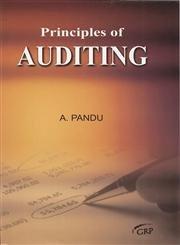






Question 2 Consider the Job Market Signalling model discussed in the slides. a) Suppose that the costs of education for low type workers are 60,000 for every year of education. For which values of y* do we obtain a Separating equilibrium? Compared to the original case, what happens to Pareto efficiency? Provide an intuitive explanation of your answers. b) Suppose that the costs of education for high type workers are 30,000 per year (and for low type 40,000/year). For which values of y* do we obtain a Separating equilibrium? Compared to the original case, what happens to Pareto efficiency? Provide an intuitive explanation of your answers. c) Suppose that the costs of education are the same for both workers. Can education still be used as a productivity signal? Explain your answer carefully. Signaling: Process by which sellers send signals to buyers conveying information about product quality. Signalling in the labor market: Can potential employees convey information about their productivity? Dressing well for the job interview might convey some information, but even unproductive people can dress well. Dressing well is thus a weak signal (or cheap talk) it doesn't do much to distinguish high-productivity from low-productivity people. To be a strong signal, the signal must be easier for high-productivity people to give than for low-productivity people to give, so that high- productivity people are more likely to give it. For example, education is a strong signal in labor markets. More productive people are more likely to attain high levels of education in order to signal their productivity to firms and thereby obtain better- paying jobs. A simple model of job market signaling Let' s assume that there are two groups of workers: low-productivity workers (Group I), whose average and marginal product is 1, and high-productivity workers (Group II), whose average and marginal product is 2. Workers will be employed by competitive firms whose products sell for $10,000, and who expect an average of 10 years' work from each employee. We also assume that half the workers in the population are in Group I and the other half in Group II, so that the average productivity of all workers is 1.5. Note that the revenue expected to be generated from Group I workers is $100,000 ($10,000/year* 10 years) and from Group II workers is $200,000 ($20,000/year * 10 years). Perfect information scenario: If firms could identify people by their productivity, they would offer them a wage equal to their marginal revenue product. Group I people would be paid $10,000 per year, Group II people $20,000. Asymmetric Information Scenario: On the other hand, if firms could not identify productivity before they hired people, they would pay all workers an annual wage equal to the average productivity- $15,000. Group I people would then earn more ($15,000 instead of $10,000), at the expense of Group Il people (who would earn $15,000 instead of $20,000). Education as a Productivity Signal: The key assumption is that the cost of education is greater for the low-productivity group than for the high-productivity group. Suppose that for each group the cost of attaining educational level y (say, years of schooling) is Ci(y) = 40,000y for Type I workers, and Cli(y) = 20,000y for Type II workers. Education is costly because of tuition fees, opportunity costs of time, psychological pressure for good grades etc. Now suppose (to keep things simple and to dramatize the importance of signaling) that education does nothing to increase one's productivity; its only value is as a signal. Equilibrium: Suppose firms use this decision rule: Anyone with an education level of y* or more is a Group Il person and is offered a wage of $20,000, while anyone with an education level below y* is a Group 1 person and is offered a wage of $10,000. Is there a value y* > 0 such that the firm can correctly identify workers based on the above rule? To answer this, we must answer how much education will workers in each group obtain, given that firms are using this decision rule? The benefit of education B(y) is the increase in the wage associated with y > y* Because of the decision rule, B(y) = 0 for all y y* - the increase in salary from identified as type II over a 10 year employment period (assume in present value). So, for both the workers, the choice boils down to obtaining either y = 0 or y = y*, since education is costly. Type I consumers will choose y = 0 as long as the cost of y = y* exceeds the benefit: 40,000y* > 100,000 or y* > 2.5 Type Il consumers will choose y = y* as long as the benefits of y* exceed the costs: 100,000 20,000y* or y* 0 such that the firm can correctly identify workers based on the above rule? To answer this, we must answer how much education will workers in each group obtain, given that firms are using this decision rule? The benefit of education B(y) is the increase in the wage associated with y > y* Because of the decision rule, B(y) = 0 for all y y* - the increase in salary from identified as type II over a 10 year employment period (assume in present value). So, for both the workers, the choice boils down to obtaining either y = 0 or y = y*, since education is costly. Type I consumers will choose y = 0 as long as the cost of y = y* exceeds the benefit: 40,000y* > 100,000 or y* > 2.5 Type Il consumers will choose y = y* as long as the benefits of y* exceed the costs: 100,000 20,000y* or y*













